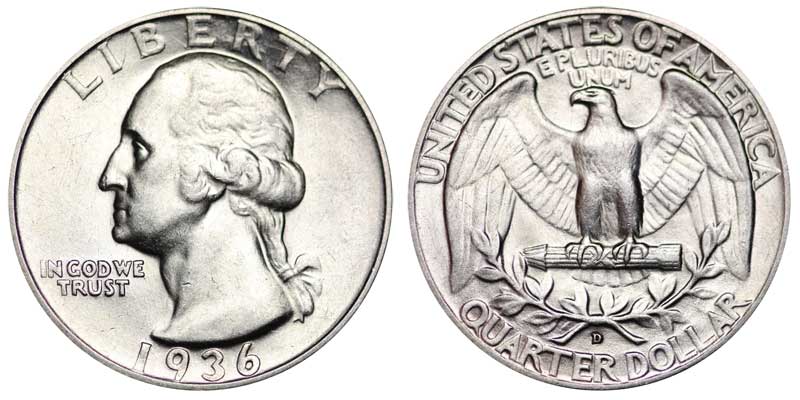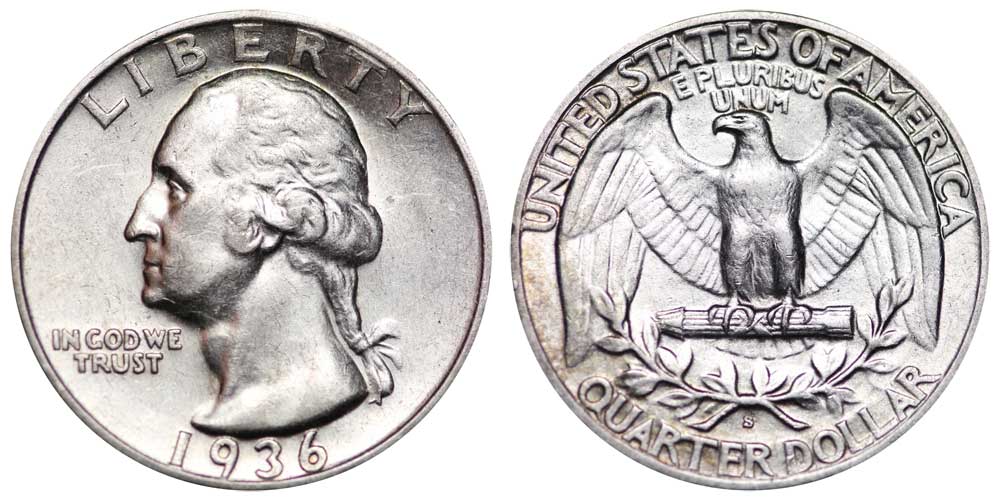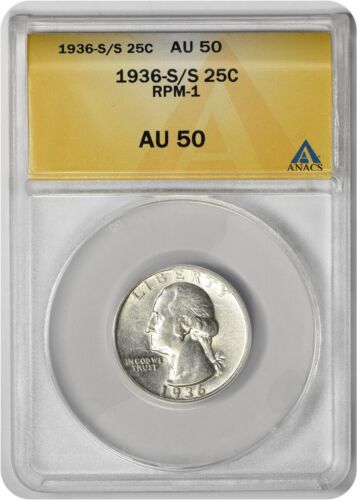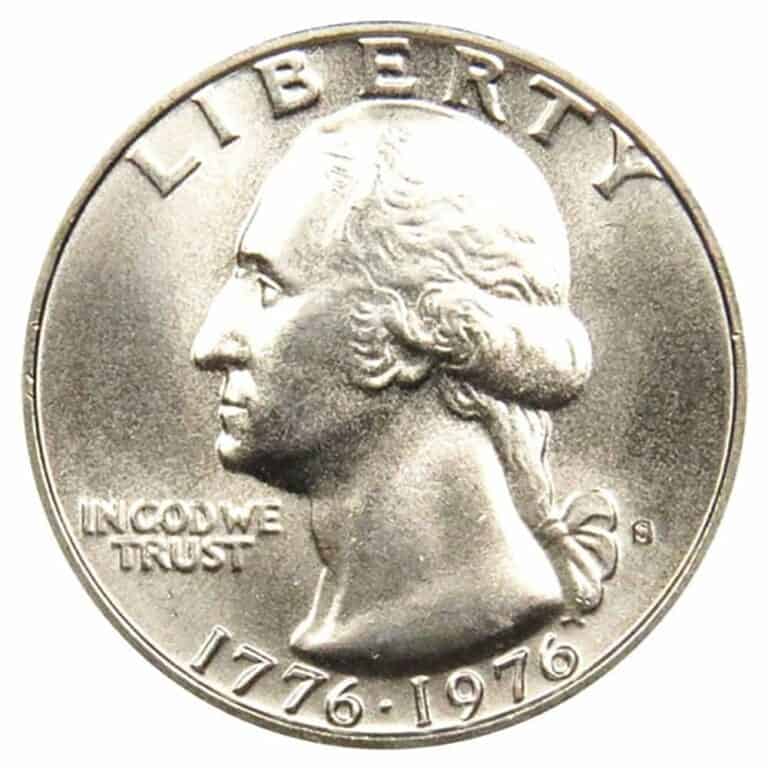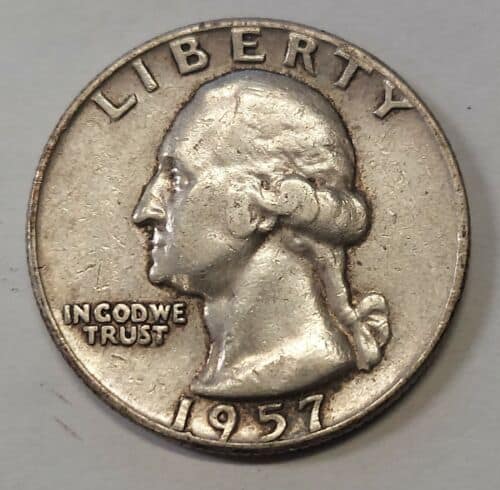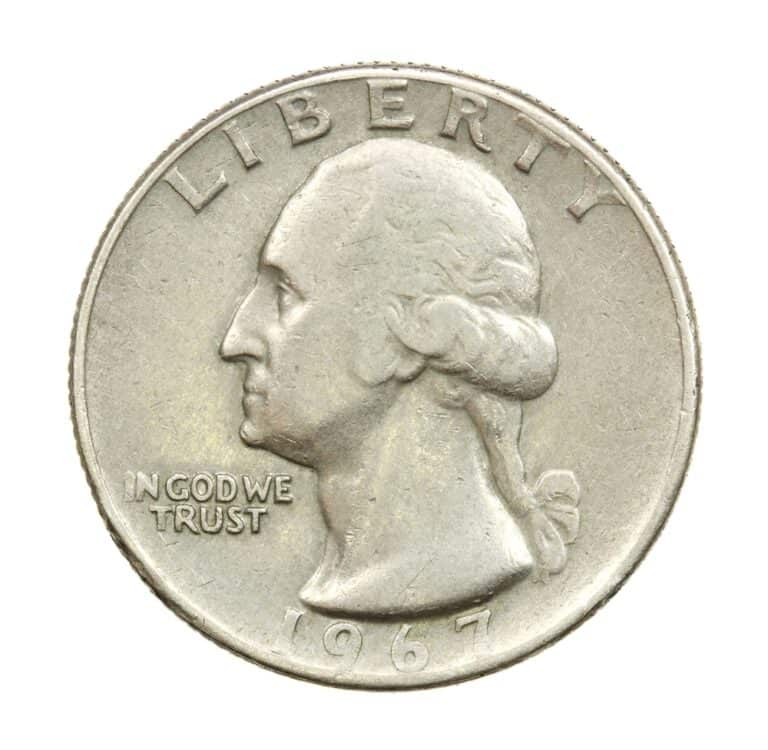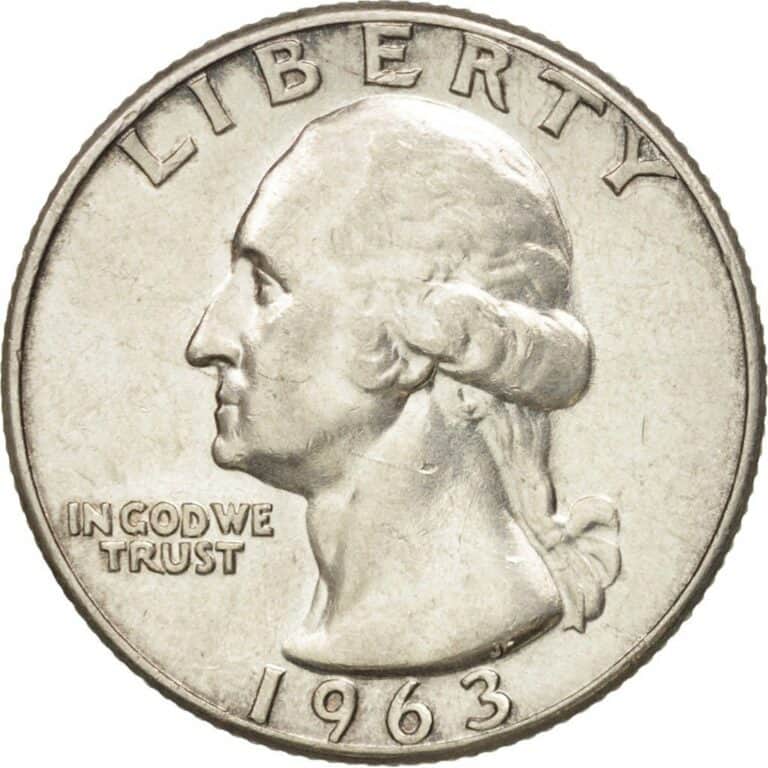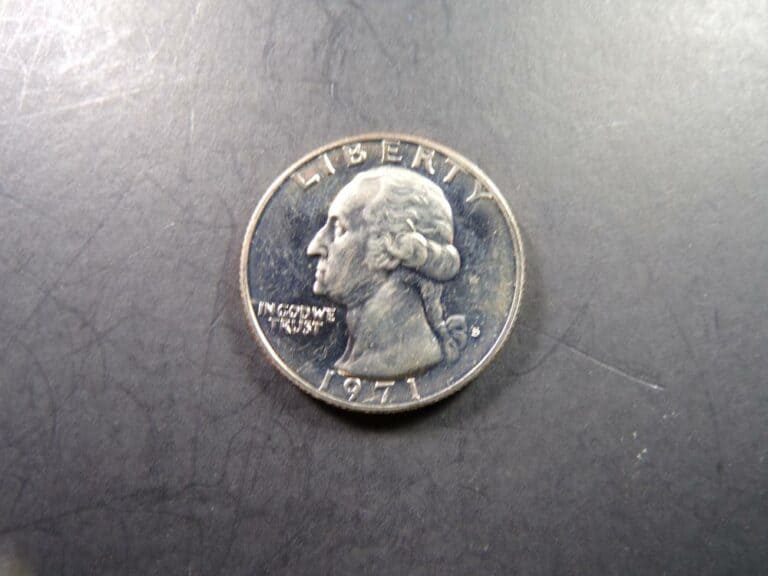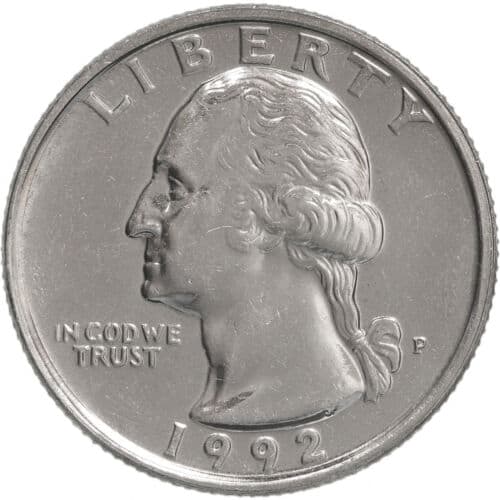1936 Quarter Value: How Much Is It Worth Today?
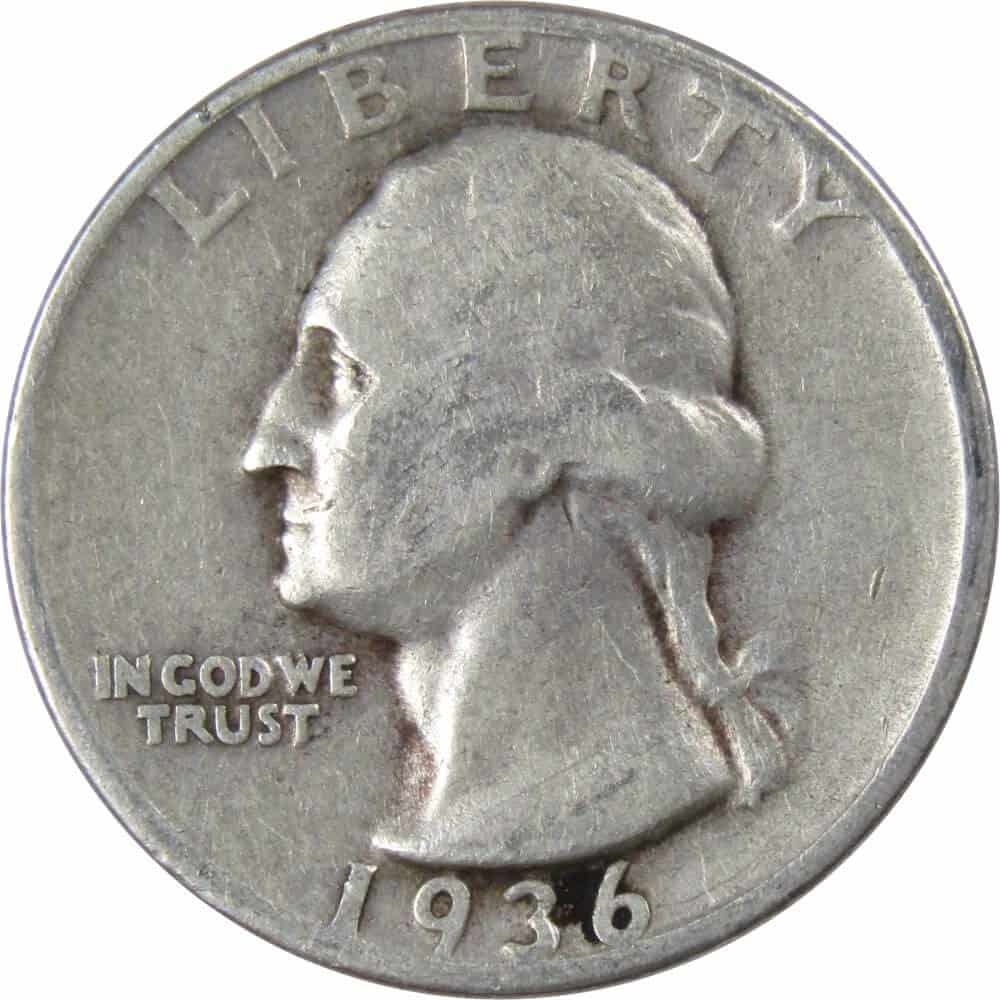
If you own a 1936 quarter, you could have a coin worth significantly more than its face value. Prices of 1936 quarters in good condition start from around $5, while mint condition quarters can be worth thousands. But how can you tell if you have one of these valuable coins?
The value of a 1936 quarter depends on its condition and rarity. In this article, we explore the values of quarters and explain the grading system used to determine their value. You will also find a list of errors associated with the Washington quarters from 1936.
1936 Quarter Value Chart |
||||
| Mint Mark | Extremely Fine | About Circulated | MS60 | MS65/ PR65 |
| 1936 No Mint Mark Quarter Value | $7.42 | $9.60 | $29 | $136 |
| 1936 D Quarter Value | $65 | $287 | $585 | $1,228 |
| 1936 S Quarter Value (Proof) | $15 | $57 | $136 | $373 |
| 1936 Proof Quarter Value | – | – | – | $1,657 |
1936 No Mint Mark Quarter Value
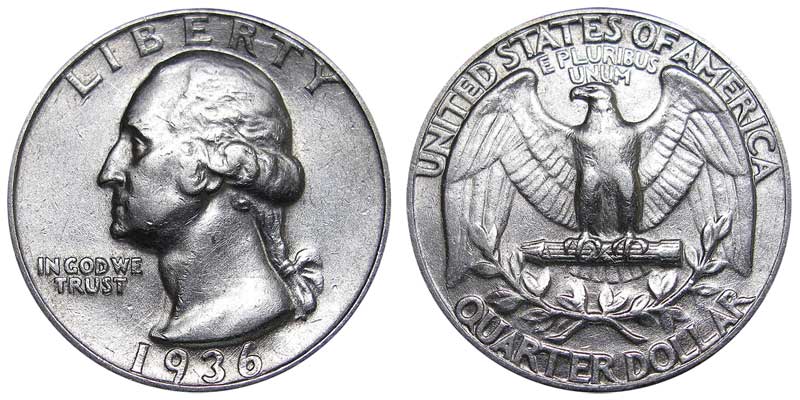
In 1936, the Philadelphia Mint produced a record number of quarters at 41,303,837 regular struck quarters. Even though there were such a large number of no-mint mark coins produced in 1936, their age means that most of them are now worth more than their face value.
While many other old coins that are no longer in mint condition will not be worth more than their face value, even quarters that are only graded as good are worth around $5, and MS60-graded coins are valued at $29. For MS67 graded coin, you can expect to pay between $265 and $360.
The most valuable example of a 1936 no-mint mark quarter is an MS68-graded coin. It was sold at a Heritage Auctions sale in 2022 and the new owner had to part with $9,000 to win the auction.
History of the 1936 Quarter
The Washington quarter is a coin that was first introduced in 1932 to commemorate the 200th anniversary of the birth of George Washington, the first President of the United States. The coin replaced the Standing Liberty quarter, which had been in circulation since 1916.
Artists were invited to submit their ideas for the new coin and nearly 100 designs were submitted. The winning design was submitted by Laura Gardin Fraser. However, her design did not end up on the coin when the honor was given to John Flanagan instead. It is likely that the Treasury Secretary at the time did not think women were up to designing such important coins.
Composition Changes
When the Washington quarter was first released, the US was in the middle of the Great Depression, and millions of people were struggling financially. It was important for the U.S. government to stimulate the economy.
One way the government did this was by minting coins with higher silver content than usual. This helped to increase demand for the coins and put more money into circulation.
From 1932 until 1964, the Washington quarters were made with 90% and 10% copper. The composition was changed in 1965 when a combination of copper and nickel was used because of silver shortages.
1936 D Quarter Value
In 1936, far fewer quarters were struck at Denver than in Philadelphia. The Denver Mint produced 5,374,000 regular strike quarters. Because there were fewer D minted coins, their values at higher grades are more than no mint mark 1936 quarters.
While you can purchase a 1936 D quarter in good condition for around $15, you will need about $$287 for a coin that is in ”about uncirculated” condition. An MS60 graded 1936 D quarter is worth approximately $585 and MS65 is worth over a thousand dollar.
For an MS67-graded coin, you can expect to pay between $2,600 and $3,000. The auction record for the 1936 D quarter is from 2004 when an MS67-graded quarter sold for $17,250.
The Obverse of the 1936 Quarter
The obverse of the 1936 quarter features a portrait of Washington, which gives the coin its name. The portrait is facing left and depicts the president with his hair tied with a bow as was fashionable at the time.
The word ”LIBERTY” is above the portrait curving along the rim. To the left of the portrait is the motto ”IN GOD WE TRUST” and the date is below the portrait. The designer’s initials JF are at the truncation of the president’s neck.
The Reverse of the 1936 Quarter
The reverse of the coin has an image of an American bald eagle with its wings spread. The words ”UNITED STATES OF AMERICA” run along the top rim coming down to about halfway point on both sides of the eagle. Between the eagle and the country name is the Latin phrase ”E PLURIBUS UNUM”.
Below the eagle are two olive branches which symbolize preserving peace. In its claws, the eagle holds a bundle of arrows, symbolizing the country’s readiness to defend its freedom.
The denomination ”QUARTER DOLLAR” is at the bottom, curved along the rim. The mint mark on the Denver and San Francisco struck coins is below the design, above the letters E and R of the denomination.
1936 S Quarter Value
If you have a quarter from 1936, it is worth checking the mint mark. If it bears the mint mark S, it was minted in San Francisco and these coins are more valuable than either no mint mark or D minted quarters from 1936.
In 1936, the San Francisco Mint produced only 3,828,000 Washington quarters, and it is not common to find mint condition specimens. While coins that have been in circulation and show signs of wear and tear are valued between $5 and $70, MS67-graded coins can be worth up to $1,100.
However, the most expensive 1936 S quarters are those graded as MS68. Collectors are often ready to pay five-figure sums for these coins. Generally, they are valued between $25,000 and $31,000. The auction record was made in 2021 when a collector paid $31,200 for an MS68 graded quarter at a Stack’s Bowers sale.
The Design Changes to the 1936 Quarter
The Washington quarter has been in circulation since it was introduced in 1932. During this time, there have been occasional design updates. While the obverse has remained the same with a portrait of Washington, the reverse has changed since the original design,
In 1975 and 1976, the reverse was modified to commemorate the bicentennial of the United States. The new design featured a colonial drummer and a torch surrounded by thirteen stars representing the original thirteen colonies.
Since the 1970s, there have been several other design changes to the reverse of the Washington quarter. These have included a series of coins that featured different reverse designs to honor each of the fifty states in the US.
1936 Proof Quarter Value
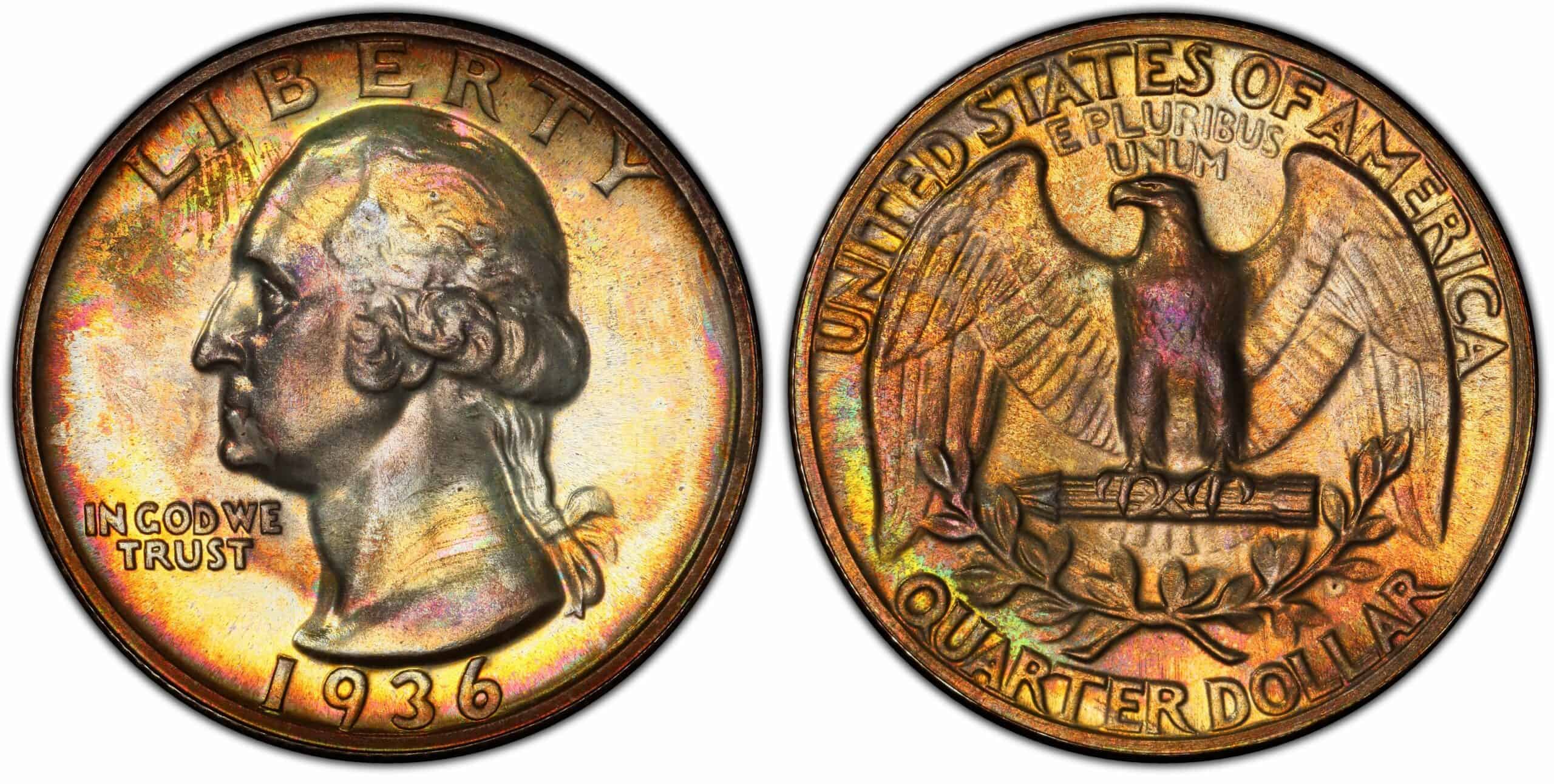
In 1936, the Philadelphia mint produced 3,837 proof quarters on top of regular strike coins. These are highly valuable in today’s coin market because of their low mintage, rarity, and quality.
Collectors will pay between $400 and $480 for PR60 graded 1936 proof quarters. Prices for PR66 graded proof coins start from $1,000 and PR67 proof coins are worth $5,000 to $6,000. The record price paid for a 1936-proof quarter is $10,925.
1936 Quarter Grading
When a coin is sent to a professional coin grader, they will use a scale from 1 to 70 to determine its value. The grades range from poor (P) to about uncirculated (AU) for coins that have been in circulation. Coins that were meant for circulation but are still in mint condition are graded using the letters MS followed by a grade from 60 to 70.
Proof Coin Grading
Proof coins are valued slightly differently from regular struck coins. Because proof coins were not intended for circulation but were bought by collectors, they are usually still in good condition.
Proof coins are usually graded on a 70-point scale, with 70 being the highest grade. A proof coin scoring 70 is considered to be in perfect condition, while a coin scoring 60 or lower is considered to be imperfect or flawed.
When graders are determining the value, they look for the strike quality, surface preservation, and the coin’s overall eye appeal.
Rare 1936 Quarter Error Lists
1936 Quarter Doubled Die Error
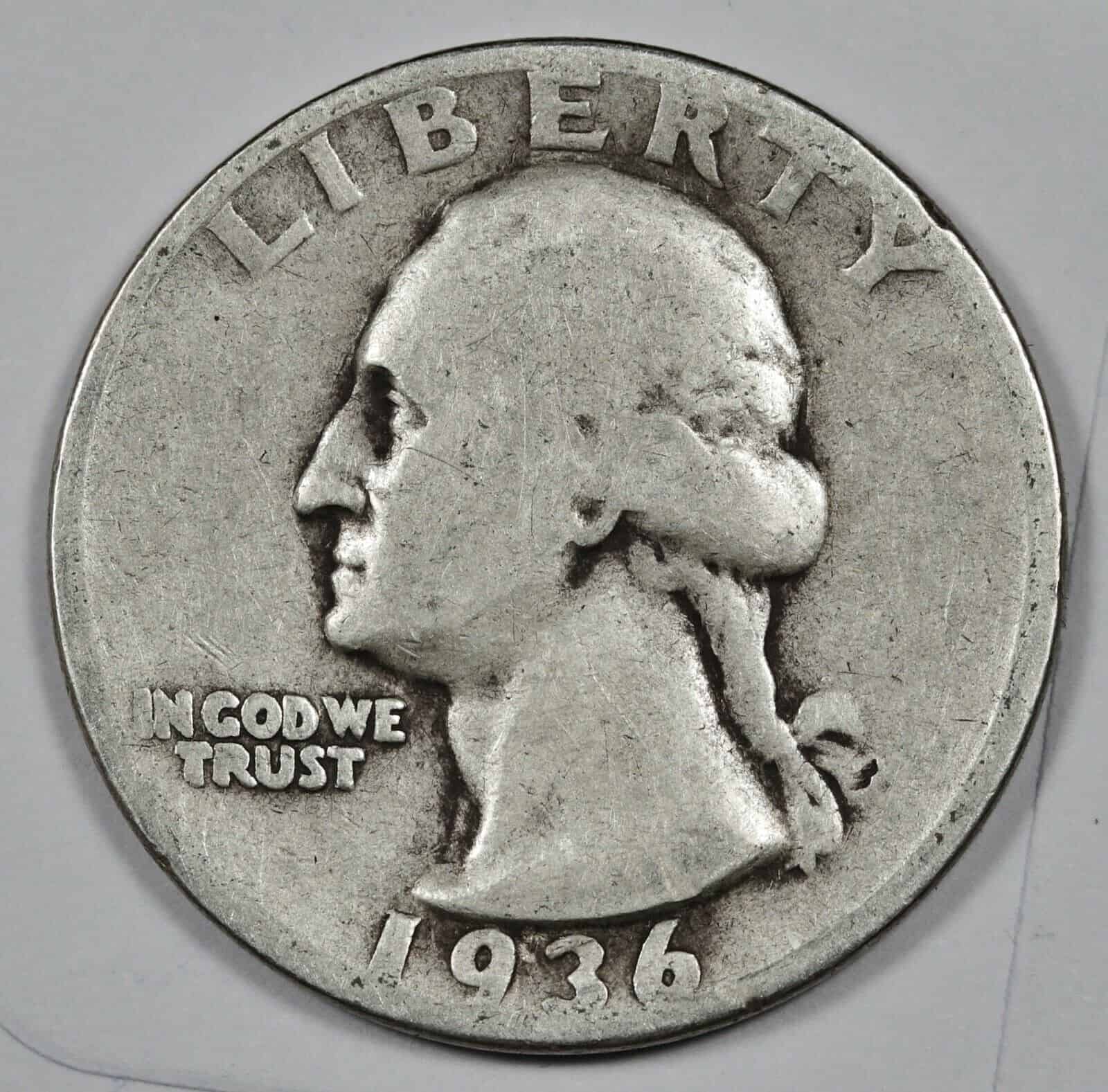
A doubled die error occurs when the planchet is struck by the die more than once. Usually, when a doubled die error occurs, the planchet is struck twice. However, sometimes it can strike the same coin multiple times.
On the 1936 Washington quarters, there is a visible doubling on some coins’ numbers or lettering. The most valuable 936 quarter with a doubled die error on the obverse was sold at Heritage Auctions sale in September 2018. It sold for $6,600.
How much a 1936 quarter with a doubled die error is worth depends on its overall condition. An MS62 graded quarter is worth between $900 and $1,080, MS63 between $1,300 and $1,560, and MS66 between $2,600 and $3,250.
1936 Quarter Off-Center Error
Off-center errors occur when the planchet hasn’t entered the coin machine correctly. When the die strikes the coin which is in the wrong position, the image is not struck perfectly in the middle as it is supposed to be.
The severity of the error ranges from 1% to 99%. The most valuable 1936 quarters with an off-center error are those where the date is still clearly visible, and the image is about 50% off the center.
1936 Quarter Doubled Die and Off-Center Error
Very rarely will two errors occur on the same coin. Some rare 1936 quarters show evidence of both doubled die and off-center error. The value of these error coins depends on their condition and the severity of the errors.
1936 Quarter CUD Error
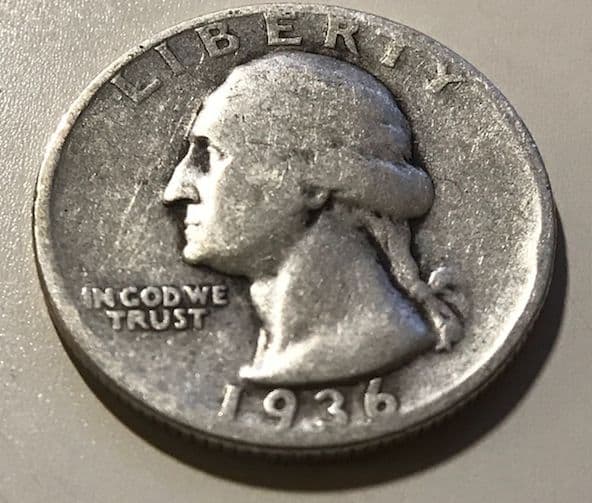
Sometimes the die can break or crack. This is more likely to happen when the die ages. A break or crack in the die can result in imperfections on the coin such as a portion of the rim missing. This error is relatively rare in the 1936 quarters but the value of the coin depends on its quality.
1936 Quarter Repunched Mint Mark Error
In the past, the mint marks were punched by hand, which meant that errors occurred relatively regularly. When the first mint mark would be punched in the wrong position or orientation, it would be repunched in the correct position. As a result, the mint mark is doubled or slightly blurred.
1936 Quarter Die Clash Error
A die clash error occurs when the reverse and obverse die to collide without a blank coin between them. This results in a faint ghost image of the opposite design on the other side of the coin. These are quite common in the 1936 quarter.
1936 Quarter Frequently Asked Questions
What is the rarest silver quarter?
The rarest silver quarter is the 1896-S Barber Quarter, which was minted at the San Francisco Mint. The 1896-S Barber Quarter had a mintage of only 188,039 coins, making it the lowest mintage silver quarter of the Barber series.
How much silver does a 1936 quarter have?
The 1936 quarters have a high percentage of silver. Quarters minted in 1936 have 90% of silver. This is because the United States government was trying to help revive the economy by releasing coins with more silver to make them more desirable.
Modern quarters (those minted since 1965) are made of a sandwiched composition of copper and nickel, known as cupronickel. The composition of modern quarters is 91.67% copper and 8.33% nickel, with a total weight of 5.67 grams.
What year is the most valuable quarter?
The most valuable quarter is the 1796 Draped Bust Quarter. This coin was one of the first quarters ever minted by the United States Mint and has a very low mintage of only 6,146 pieces.
Due to its rarity, the 1796 Draped Bust Quarter can fetch millions of dollars at auctions. In 2015, a PCGS-graded VF30 example of this coin sold for $1,527,500, making it one of the most expensive quarters ever sold.
